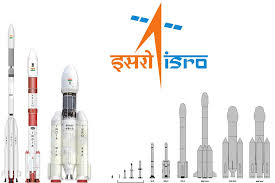GSAT-7R: India’s Heaviest Naval Communication Satellite

The Indian Space Research Organisation (ISRO) successfully launched GSAT-7R (also known as CMS-03), India’s heaviest indigenously built advanced communication satellite, from Satish Dhawan Space Centre (SDSC), Sriharikota marking a major boost to the country’s space capabilities and naval communications.
- The CMS-03 was successfully launched using the Launch Vehicle Mark-3 (LVM3) on its fifth operational flight (LVM3-M5).
- CMS-03 is a multi-band communication satellite that will provide services over a wide oceanic region including the Indian landmass.
- CMS-03, weighing about 4400kg, is the heaviest communication satellite launched to Geosynchronous Transfer Orbit (GTO) from India.
- The previous mission of LVM3 launched the Chandrayaan-3 mission, where India became the first country to land successfully near the lunar south pole.
- The satellite has been placed in a GTO and will later move into its final Geostationary Orbit using its onboard propulsion system.
- Designed for a 15-year mission life, CMS-03 carries advanced multiband transponders that transmit voice, data, and video signals, ensuring secure, high-capacity communication for the Indian Navy across the Indian Ocean Region (IOR).
- The GSAT-7R replaces the decade-old GSAT-7 (Rukmini), launched in 2013, which has now reached the end of its operational life.
- This new satellite is fully indigenously developed, symbolising progress under Aatmanirbhar Bharat.
- LVM3-M5 strengthens India’s strategic autonomy and reduces reliance on foreign launch vehicles for heavy payloads such as the European Ariane-5.
- It supports Gaganyaan preparations by showcasing LVM3’s heavy-lift capability and cryogenic engine re-ignition test for future missions.




